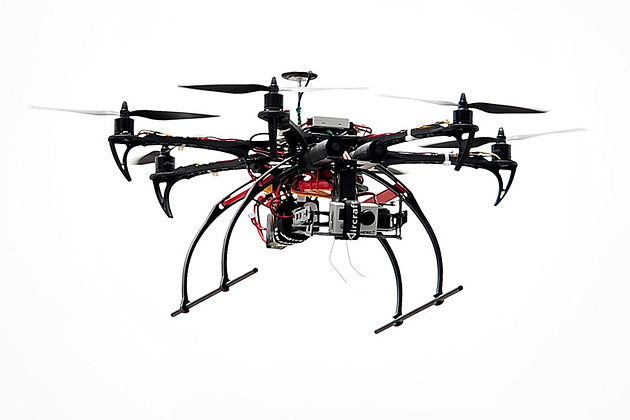Drones: The future is up in the air

From farm fields in Nebraska to battlefields in Afghanistan, and from personal use to commercial, drones seem to be flying into controversy.
Today, unmanned aircraft are flying in the National Airspace System (NAS) under very controlled conditions, performing border and port surveillance by the Department of Homeland Security, helping with scientific research and environmental monitoring by NASA and NOAA, supporting public safety by law enforcement agencies, helping state universities conduct research, and supporting various other missions for public (government) entities. Operations range from ground level to above 50,000 feet, depending on the specific type of aircraft. However, unmanned aerial systems operations are currently not authorized in Class B airspace, which exists over major urban areas and contains the highest density of manned aircraft in the NAS. The Federal Aviation Administration has determined that unmanned aerial systems, commonly referred to as drones, are “aircraft” subject to federal regulation.
But these regulations have been shrouded in controversy recently, both commercially and personally.
Huerta v. Pirker
The National Transportation Safety Board (NTSB) recently overturned an administrative ruling in favor of an aerial photographer, upholding the FAA’s determination that drones are subject to federal regulation.
The NTSB decision came in the case Huerta v. Pirker, in which photographer Raphael Pirker challenged a $10,000 fine levied against him for flying a camera-equipped model aircraft around the University of Virginia. Pirker had successfully challenged this fine before the administrative law judge, who ruled that Pirker’s Zephyr fixed-wing aircraft was a “model aircraft” and that models were not subject to general aviation regulations.
In its decision released in November 2014, the full NTSB reversed the administrative law judge and held that the FAA could apply its generally applicable federal aviation regulations to small unmanned aerial systems because they fit within the regulations’ broad definition of “aircraft.” The regulations define aircraft as “a device that is used or intended to be used for flight in the air.”
The NTSB, in sweeping deference to the FAA, said:
“[T]he plain language of the statutory and regulatory definitions is clear: an “aircraft” is any device used for flight in the air…The [FAA] Administrator’s interpretation of this text – that it applies to respondent’s operation of his Zephyr to prohibit careless or reckless operations – is reasonable, given the broad language of the section.”
The NTSB remanded the decision of the administrative law judge to review evidence and determine whether Pirker’s October 2011 flights around the University of Virginia campus were “careless or reckless” under FAA regulations.
This decision applying the regulations to UAS, regardless of size, is concerning for businesses in the U.S. that hope to spur innovation through safe commercial use of the technology. It could also affect news media companies hoping to safely and legally gather news and information in the public interest.
Consumer drones
Sales of recreational drones are skyrocketing as photographers, farmers and firefighters realize the incredible views they can capture from high above. Drones carrying small cameras can go where humans can’t. The problem is, that type of consumer film making isn’t always legal. Flying above 400 feet is in violation of the law, as is flying within 3 miles of an airport without telling airport personnel.
Consumer drones have soared to become a $450 million dollar industry, up 45 percent in the last year, but their future is a bit up in the air. In the last six months, there have been at least 25 close calls with drones reported by airplane pilots and the FAA may crack down on where, how and when drones can fly.
But there’s more to drones than danger. At a price point starting at around $500, people are sending more and more affordable drones into the sky, primarily with GoPro cameras.
The future of the technology is looking up as well. Big data capture, from crop charting to construction site and sky mapping, drones are taking familiar techniques like Google street view to the sky.
Even big box retailers like Amazon could be making use of the trend soon. While store-to-home delivery may not be in the near future, businesses could make use of the mini helicopters in a safe and practical way.
Adam Lockhart, principal attorney editor at Thomson Reuters, has delved into the state of current statutes, proposed legislation, and regulations on the topic of drones and unmanned aircraft. “My research discloses that only eight states currently have laws or regulations that are directly related to drones or unmanned aircraft, and those laws focus on law enforcement, privacy and hunting,” he said.
So far in 2015, there is proposed legislation in 14 states that typically touch on law enforcement, privacy, and hunting. House Bill 370 in Missouri is a proposal to ban civilian drone flights: at an altitude above 300 feet, out of visual distance of the operator, or within five miles of an airport.
“Given the uptick in legislation related to drones, the consumer drone community would be well advised to keep abreast of the latest developments to avoid illegal behavior and/or civil sanctions,” said Lockhart.